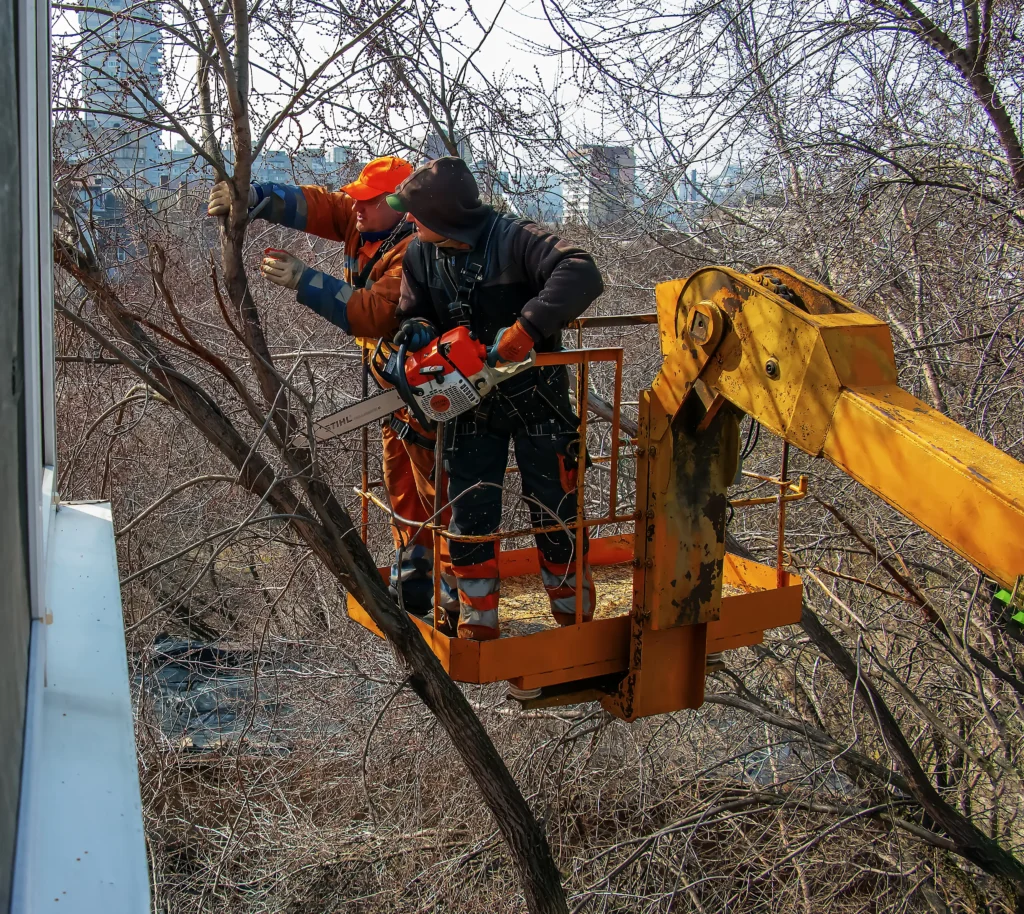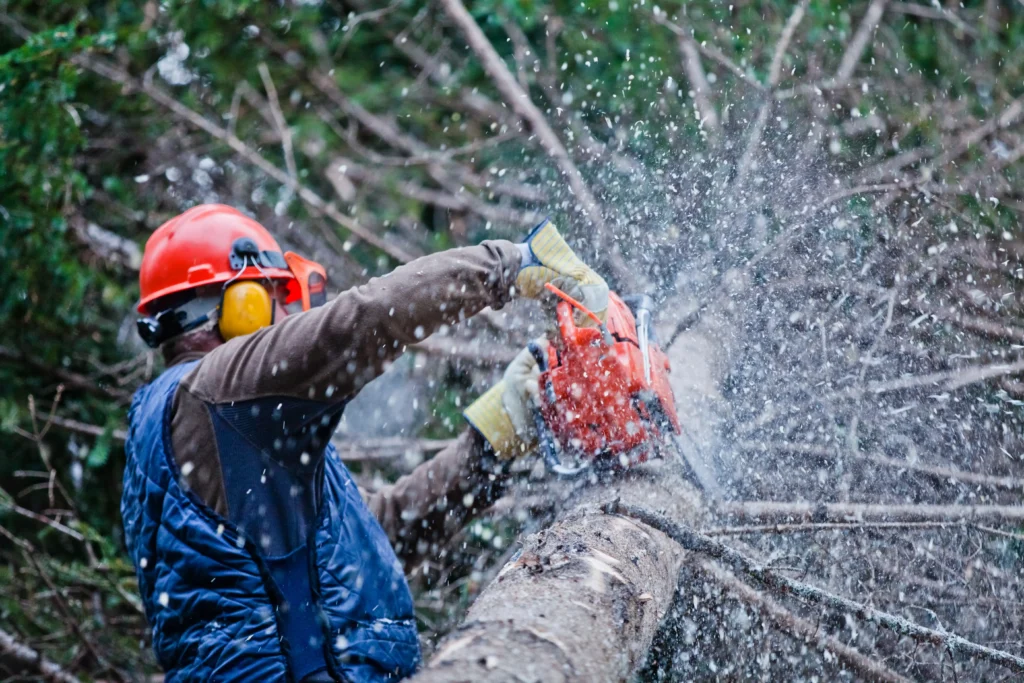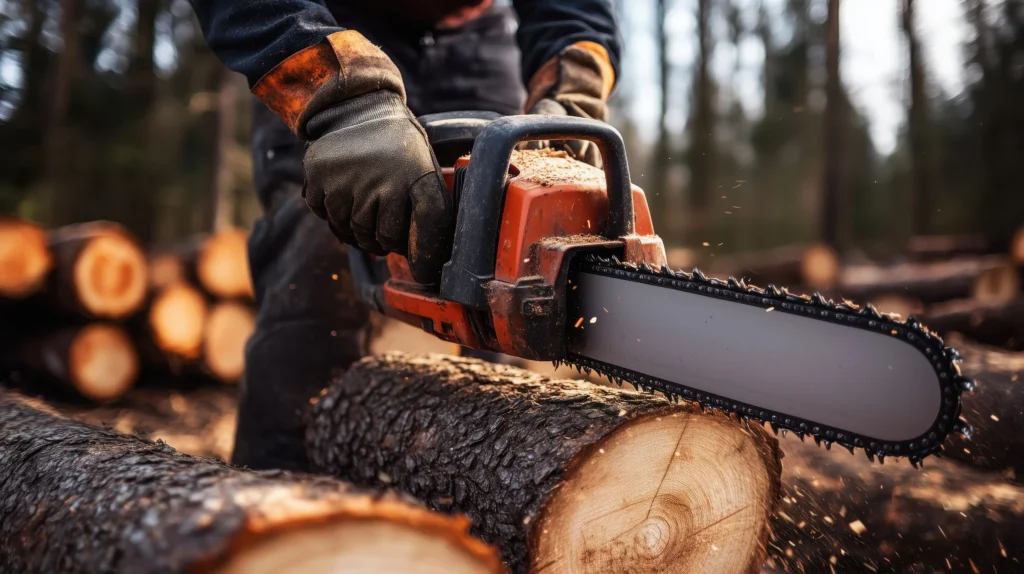A chainsaw safety audit protects lives.
- It starts with clarity.
- It demands action.
- It requires preparation.
Why a Chainsaw Safety Audit Matters
- Chainsaws cause serious injuries.
- OSHA reports thousands of incidents annually.
- Many result in lacerations, broken bones, even fatalities.
- A quick audit can prevent these.

Step-by-Step: Conducting the Audit
1. Prepare Your Team and Gear
- Assemble a small audit team.
- Include those trained in chainsaw operations.
- Ensure they wear proper chainsaw safety gear.
- Check for Chainsaw Gloves that resist cuts.
- Confirm presence of a Chainsaw Helmet or chainsaw safety helmet with face shield and ear protection.
2. Inspect Chainsaw Safety Gear
- Look for wear or damage in gloves and helmet.
- Replace cracked helmet shells.
- Replace dull or frayed liners in chainsaw safety helmet.
- Clean vents and visors.
- Test visor clarity.
- Ensure gloves provide firm grip and cut resistance.
3. Review Equipment and Maintenance
- Check chain tension and sharpness.
- Confirm proper chain oiling.
- Look for loose parts or oil leaks.
- Observe whether operators sharpen chains before dullness slows them.
- Use this simple metric: a blade dull beyond every 30 minutes of use increases kickback risk by 40%.
4. Observe Work Practices
- Watch operators taking secure stances.
- Confirm they maintain safe distance from others.
- Ensure that every operator uses the gear: chainsaw safety gear, Chainsaw Helmet, Chainsaw Gloves.
- Check that helmets are snug, not tilted.
- Ensure operators rest when fatigued, to reduce mistakes.
5. Check Site Setup
- Evaluate clear escape routes.
- Remove tripping hazards like loose debris.
- Ensure poor lighting doesn’t compromise visibility.
- Confirm everyone communicates clearly, especially when cutting multiple trees.
6. Record Findings and Correct Immediately
- Use a checklist.
- Note non-compliance: e.g., “Operator wore baseball cap under chainsaw safety helmet — incorrect.”
- Prioritize fixes: gear replacement, site cleanup, retraining.
- Set deadlines.
- Re-audit after corrections.

Real-World Examples
Example 1: Logging Crew Incident, BC, 2023
A logger lacked Chainsaw Gloves.
He lost grip.
The saw struck his lower leg.
It caused a deep laceration.
Treatment required surgery and weeks off.
Audit findings: gloves must resist cut and add friction.
Task-site now enforces strict gear checks before work.
Example 2: Arborist Near Miss, Ontario, 2024
An arborist’s chainsaw safety helmet had a cracked visor.
It shattered mid-cut.
Fragment flew past his face.
He escaped serious injury, but it scared the team.
Audit response: daily helmet inspections.
Replaced damaged helmet immediately.
Now includes “visor integrity” in every chainsaw safety audit checklist.

Thought-Provoking Question
What if your audit reveals that one piece of gear is almost always overlooked—what will you change to make it mandatory, without fail?
FAQs:
Key Takeaways
- **Prioritize proper chainsaw safety gear— especially Chainsaw Gloves and Chainsaw Safety Helmet—every day.
- Use clear, frequent audits. Catch issues early and fix them fast.
- Learn from real incidents. Use them to sharpen your audit, your training, and your safety culture.
Conducting a chainsaw safety audit on your jobsite is not optional.
It saves limbs, lives, and time.
Act now.
Gear up.
Audit thoroughly.
Let that audit be the difference between safety and tragedy.








kong88nesl
Kong88nesl, not bad, not bad at all. Found some interesting games that I haven’t seen elsewhere. If you’re bored of the same old stuff, give it an honest look: kong88nesl
8qbetcom
Cheers mates! Gave 8qbetcom a shot and registration seemed to require a few extra details! After doing that, games seemed smooth to load and use. check it here: 8qbetcom